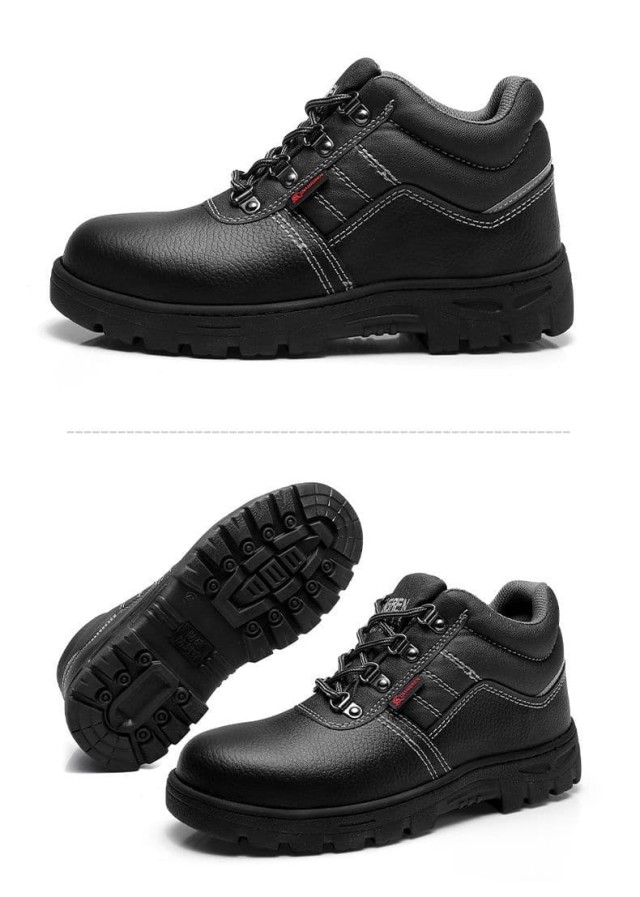Modern workplaces demand safety footwear that protects without compromising comfort or functionality. Composite toe boots have emerged as the superior choice for professionals across industries—offering ASTM-certified protection with advantages steel toes can't match. Here's why they're transforming safety standards.
Composite Toe Work Boots: Beyond Basic Protection
Unlike traditional steel toes, composite toe boots use advanced materials like carbon fiber, Kevlar, or reinforced plastics to meet safety requirements while solving long-standing worker pain points.
How Composite Materials Disperse Impact Energy
Research confirms both composite and steel toes withstand 75 foot-pounds of impact force and 2,500 pounds of compression—meeting ASTM F2413-18 standards identically. But composites achieve this through layered, energy-absorbing designs that:
- Reduce weight by up to 30% compared to steel, minimizing leg fatigue during 12-hour shifts
- Eliminate thermal transfer, preventing toe burns in foundries or frostbite in freezers
- Deflect rather than absorb force, distributing pressure across the toe box
Safety Certifications: ASTM Compliance and Electrical Hazard Resistance
Composite boots excel in specialized protections:
- EH-rated (Electrical Hazard): Non-conductive materials prevent current flow, critical for electricians
- Metal-free construction: Ideal for airports, secure facilities, or MRI environments
- Temperature stability: No conductivity means no heat/cold transfer in extreme climates
Industry-Specific Advantages
Construction Sites: Lightweight Durability for Long Shifts
A 2023 ergonomic study found workers wearing composite toes reported 40% less fatigue after 8 hours versus steel toes. Their lighter weight reduces muscle strain during climbing or kneeling—common in roofing or carpentry.
Electrical Work: Non-Conductive Protection
Traditional steel toes pose shock risks near live circuits. Composite materials inherently block electricity, making them the only OSHA-compliant option for linemen or utility workers.
Cold Environments: Insulation Without Metal Freeze Risks
Alaskan oil rig crews report composite toes prevent the "toe freezer" effect of steel in subzero temperatures. The materials won’t conduct ground cold like metal, maintaining warmth.
Real-World Impact: Case Studies in Injury Prevention
- A Houston electrician avoided severe burns when his composite-toe boots prevented current from a 480V short circuit reaching his feet.
- A warehouse team reduced foot fatigue complaints by 58% after switching to composite toes during 10-hour loading shifts.
- Airport baggage handlers passed security checks 30% faster with metal-free footwear, eliminating scanner delays.
Step Into Safer Workdays
3515’s composite toe boots combine certified protection with ergonomic design—helping distributors and bulk buyers equip workforces with footwear that actually gets worn. When safety feels this natural, compliance stops being a chore.
Ready to upgrade your safety lineup? Partner with 3515 to supply boots that workers choose to wear—where lightweight protection meets real-world durability.
Related Products
- Customizable Anti-Smash Safety Boots for Wholesale & Private Label Manufacturing
- Wholesale Durable Breathable Safety Boots Custom OEM Manufacturer
- Wholesale Leather Safety Boots with Customizable Protective Toe
- Durable Leather Safety Boots for Wholesale & Custom OEM Manufacturing
- Wholesale Customizable Safety Boots Durable & Protective Footwear Manufacturing
Related Articles
- How to Reduce Foot Injury Risks in High-Risk Workplaces: 3 Proven Strategies
- Matching Men’s Work Shoe Safety Technologies to Workplace Hazards
- Steel-Toe Boot Safety: Separating Fact from Fiction
- How Steel Toe Shoes Prevent Injuries: The Science Behind Workplace Safety
- Steel-Toe vs. Composite-Toe Boots: How to Choose the Right Safety Footwear for Your Job



















